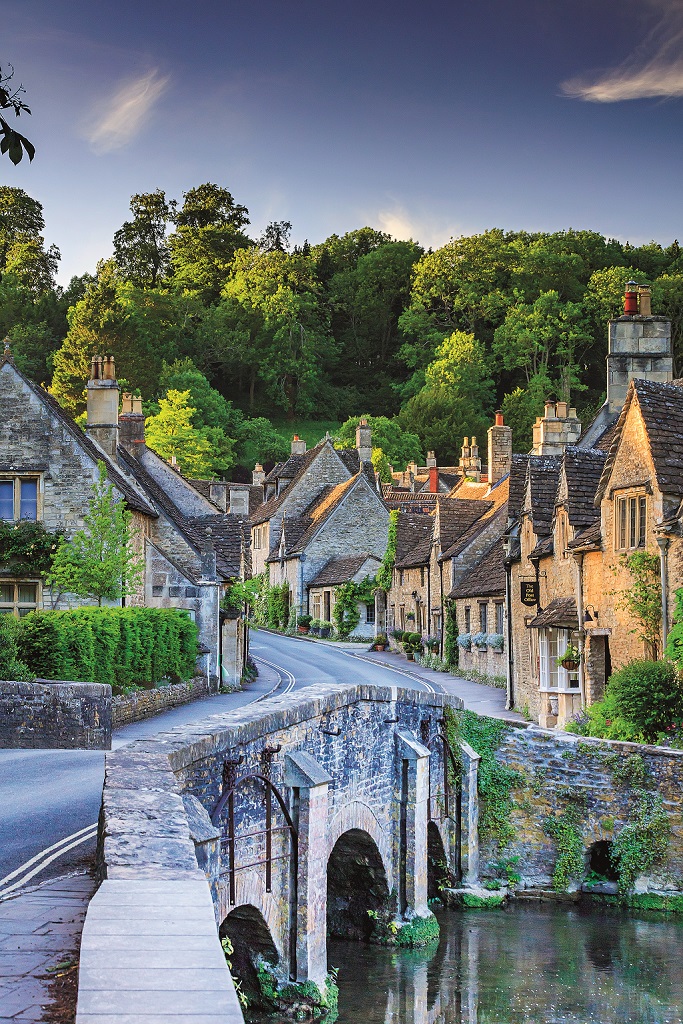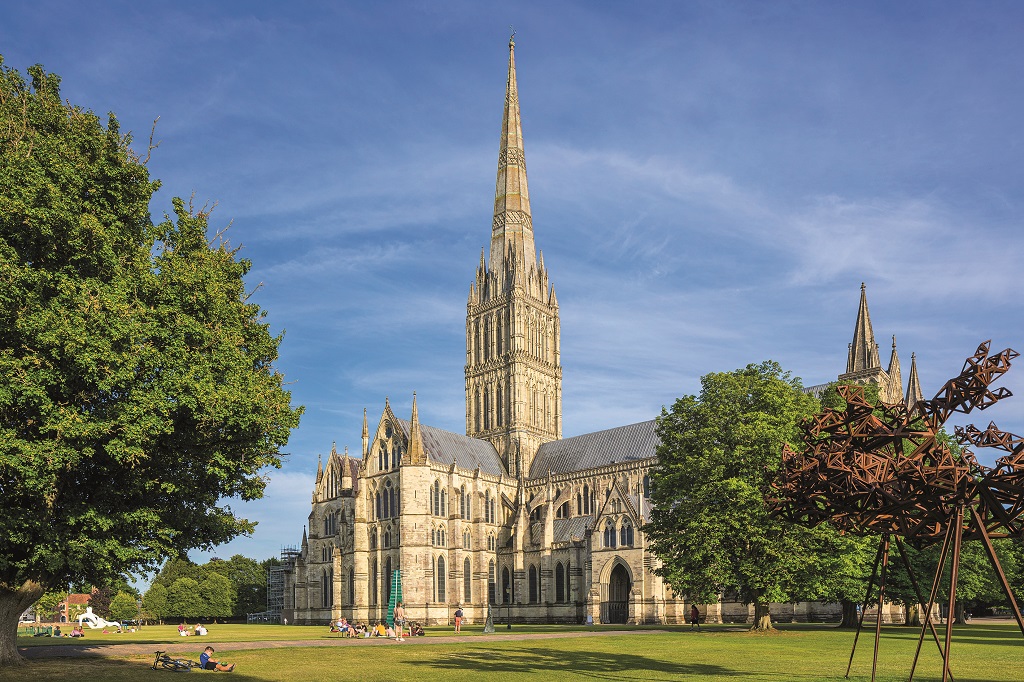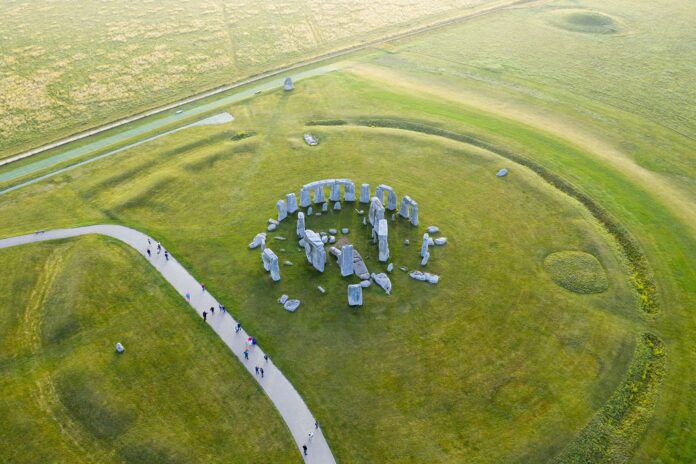Words: Jane Gifford
With its timeless landscape of chalk hills and gentle valleys, and an array of chocolate-box villages and stately manors, Wiltshire is brimming with charm
Situated in England’s rural West Country, Wiltshire is made up of rivers, medieval towns and villages, high plains and rolling downs, topped with old drovers’ roads where you can walk for miles under wide-open skies. This verdant county encompasses numerous neolithic monuments, iron age hill forts and tumuli, the ancient burial mounds that dot the skyline all over the county.
Picture-perfect Cotswold manor houses, historic churches and rural pubs abound. You can spend hours relaxing on a riverbank, where the water is clear and fast-moving, with just the rustling of the wind in the willows and the occasional birdcall to punctuate the silence.
Despite the prevailing peace, some of Britain’s most iconic and best-loved visitor attractions are in Wiltshire, not least the UNESCO World Heritage Site of Stonehenge and Avebury. Built around 5,000 years ago, these prehistoric megaliths and stone circles on Salisbury
Plain are shrouded in mystery to this day.

One of the most complete stone circles in existence from this time, Stonehenge dominates the landscape. Learn all about the stones in the visitor centre – or at least examine the many theories that attempt to explain their existence – then stroll across the Plain to see these world-famous stones close-up. At the summer and winter solstices the sun rises on opposite sides of the monument, framed between the upright stones, making this a popular destination for modern druids.
Avebury’s stone circle and avenue are thought to be even older than Stonehenge but the stones here have been much relocated, especially by Alexander Keiller, who bought the site in the late 1930s when it had fallen into disrepair. Many old Wiltshire buildings contain large stones taken from the ancient stone constructions here. Salisbury, Wiltshire’s only city, is an easy drive away.
It boasts a fabulous medieval cathedral, built 1220-58, which houses the best-preserved Magna Carta and holds the record for the tallest spire in Britain. There are some fine old houses on Cathedral Close, while the Market Place hosts a Charter Market dating back to medieval times.
For a change of pace, seek out Heale House and its eight acres of riverside gardens, hidden away among the Downs above Salisbury. The house is little changed since King Charles II hid from the Roundheads here in 1651. Snowdrop Week is a treat in February, when the
gardens are briefly open to winter visitors.

Nearby Wilton House has been the family home of the Earl and Countess of Pembroke for over 460 years. The house stands on the site of a 9th-century nunnery founded by Saxon King, Alfred the Great. The neighbouring town of Wilton has a history going back two thousand years and lays claim to the title ‘Ancient Capital of Wessex’. Don’t miss the Italianate Church of St Mary and St Nicholas, with its glittering mosaiced apse. ‘Wilton’ is also synonymous with luxury woollen carpets: in these parts there was always plentiful water for the mills and lots of excellent pasture for sheep.
Indeed, you will discover that most Wiltshire towns and villages have a river at their heart: rivers which drove the mills, which made the area rich. Confusingly, there are two rivers with the name Avon in Wiltshire. One rises near Malmesbury and flows west through Bradford-on-Avon. The other rises in the Vale of Pewsey, where two tributaries, also both called the Avon, join forces and flow south towards Salisbury. Given that ‘avon’ is an old Celtic word for river, there are several waterways in Wiltshire with the name ‘River River’.






 © 2024
© 2024